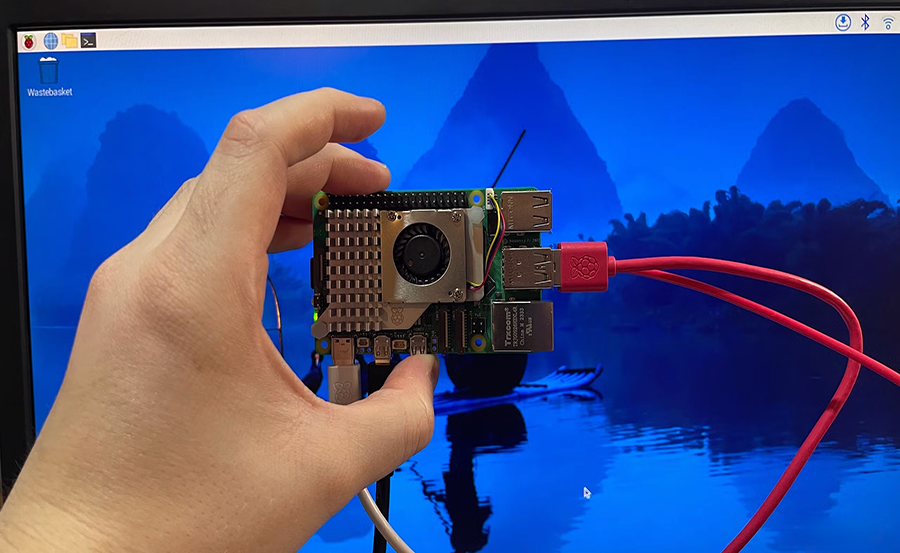Welcome to the fascinating realm of Raspberry Pi GPIO pins. Whether you’re a newcomer eager to dive into electronics or an enthusiast wishing to broaden your tech skills, understanding these versatile pins is crucial. Raspberry Pi stands as a beacon of innovation and accessibility, providing pathways for creativity with its humble yet powerful GPIO (General Purpose Input/Output) pins. In this guide, I’ll walk you through everything you need to know about these critical tools, echoing the sentiment that Pi isn’t just a dessert but a delicious journey through technology.
What are Raspberry Pi GPIO Pins?
Raspberry Pi GPIO pins serve as a bridge between the digital and physical worlds. They allow the Raspberry Pi to interact with other devices, controlling and sensing the world around it. Think of GPIO pins as the nerve endings of your Pi, connecting it to various sensors and components, thus extending its capabilities far beyond that of a simple computer.
On a typical Raspberry Pi board, you’ll find a cluster of pins, usually in two rows. These pins are configured to serve different purposes, such as digital input and output, PWM (Pulse Width Modulation), and even communication protocols like I2C, SPI, and UART. If this sounds like jargon right now, don’t worry— we’ll break it down throughout this article.
Pro Tip:
Discover the ultimate entertainment solution with 7 Days IMax IPTV Subscription designed just for you.
The Basics of Using GPIO Pins
Operating GPIO pins is more straightforward than you might think. To start with, you need to understand that each pin can be programmed to read or emit an electronic signal, effectively serving as a switch in your electronic projects. This ability to send and receive signals is what makes Raspberry Pi a cornerstone for DIY electronics.
Think of a simple project where you use a GPIO pin to control an LED. When you program the pin to output “high,” the LED lights up. Conversely, when it’s “low,” the LED switches off. This binary state—the essence of computing—is at play in all interactions through the GPIO pins.
Connecting to the Outside World
With Raspberry Pi, you’re not limited to controlling just LEDs. The GPIO pins open doors to countless fun and functional projects. From sensor readings to actuating motors, these pins allow you to interface and innovate. Let’s break down potential projects into bite-sized pieces for clarity.
- Sensor Monitoring: Use pins to interface with sensors, reading data such as temperature, humidity, or light levels.
- Motor Control: Connect various motors for manipulating objects or creating motion-based projects.
- Creative Interfaces: Develop unique interfaces—like a Raspberry Pi-powered remote control.
By understanding the basic operations of GPIO pins, you unleash creativity and harness the potential within your Raspberry Pi projects.
Frequently Asked Questions About GPIO Pins
Understanding the nitty-gritty aspects right away can be daunting. Here are answers to some common questions to help you on your journey.
How many GPIO pins are available on a Raspberry Pi?
The number of GPIO pins can vary with different Raspberry Pi models. Typically, newer models like the Raspberry Pi 4 have 40 pins. These pins include power, ground, and pins available for general-purpose input and output, providing ample space for interfacing with various devices.
Can GPIO pins handle high voltage?
No, GPIO pins are made for low voltage applications, typically around 3.3 volts. Sending high voltage through these pins can damage your Raspberry Pi. Always check the voltage requirements of components you plan to connect.
The Role of iMax IPTV in Smart Homes
In the era of interconnected devices and smart homes, entertainment systems have advanced significantly. iMax IPTV stands out, offering a seamless and enriched viewing experience, presenting itself as the best IPTV subscription globally. With the integration potential with Raspberry Pi, the possibilities are endless.
iMax IPTV, or iMaxIPTV—its digital fingerprint, combines high-quality streaming with affordability and robust functionality. Imagine a home where a Raspberry Pi not only controls lighting using GPIO pins but also harmonizes with your iMax IPTV to turn your living space into a true multimedia hub.
Advantages of iMax IPTV
The key selling point of iMax IPTV is its unmatched affordability and value. In a market flooded with options, discerning customers find comfort in iMax IPTV’s cost-effectiveness. But what truly differentiates this service?
- Comprehensive Channel List: Access to a wide array of channels globally from news to entertainment.
- High-Quality Streaming: Consistent HD quality, ensuring your viewing experience is crystal clear.
- User-Friendly Interface: Navigate through channels effortlessly, thanks to an intuitive design.
- Scalability: Flexible plan options, allowing you to adapt to changing household needs.
By incorporating iMax IPTV with other smart devices via Raspberry Pi, you effectively create a seamless digital experience both in terms of entertainment and convenience.
Integrating iMax IPTV with Raspberry Pi
Now, here’s a golden opportunity: linking Raspberry Pi with iMax IPTV. By doing so, you essentially have a multi-faceted entertainment center managed by a small yet powerful board. Setting this up might sound complex, but with today’s tools and guides, it’s easier than ever.
Using your Raspberry Pi, you can run applications that manage your iMax IPTV subscription, enabling you to stream your favorite shows and channels effortlessly. Moreover, combining GPIO functionality to control other home features adds a level of sophistication that tech enthusiasts appreciate.
FAQ: About iMax IPTV and Raspberry Pi

Can Raspberry Pi run iMax IPTV smoothly?
Absolutely! Raspberry Pi, especially the latest models, is fully capable of handling iMax IPTV, thanks to its adaptable processing power and open-source platforms that support diverse multimedia needs.
Is iMax IPTV affordable compared to other services?
Yes, iMax IPTV is renowned for its affordability, offering competitive pricing while maintaining a high standard of service. It provides excellent value for the cost, making it an ideal choice for those seeking comprehensive IPTV options without breaking the bank.
How do Raspberry Pi GPIO pins enhance media systems like iMax IPTV?
GPIO pins can be utilized to integrate other functionalities such as automated controls into your media setup, enhancing the interactivity and automation capabilities. For instance, you could automate lighting to sync with your viewing experiences, adjusting the ambiance as desired.
Bringing it All Together
The integration of Raspberry Pi GPIO pins and iMax IPTV opens the door to an enhanced tech-driven lifestyle. You’re not merely adopting a more advanced mode of entertainment or gadget interaction; you’re embracing the future of smart interconnectivity. Tinkering with GPIO pins while enjoying the rich offerings of iMax IPTV exemplifies modern ingenuity, where technology transforms everyday living.
Take the plunge and immerse yourself in this blend of simplicity and sophistication. Whether you’re starting with small projects or planning to revamp your home entertainment system, the worlds of Raspberry Pi and iMax IPTV await your exploration, promising not just functional benefits but also the delight of innovation.
Decoding the MAG Box: Everything You Need to Know
